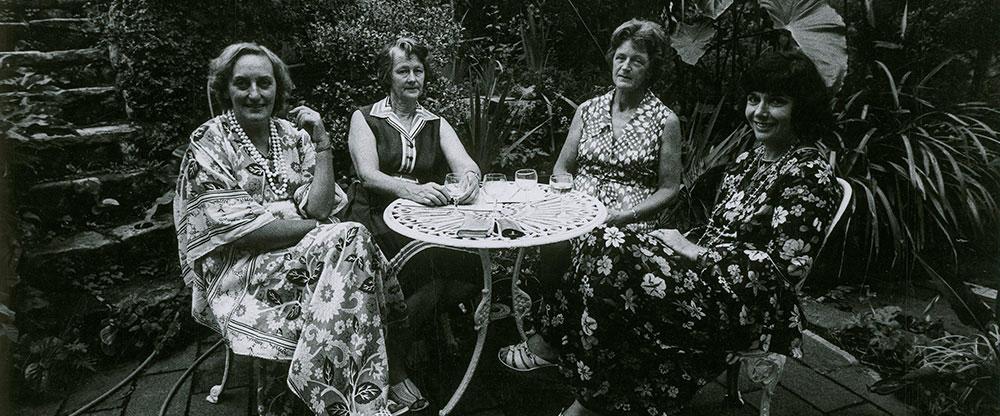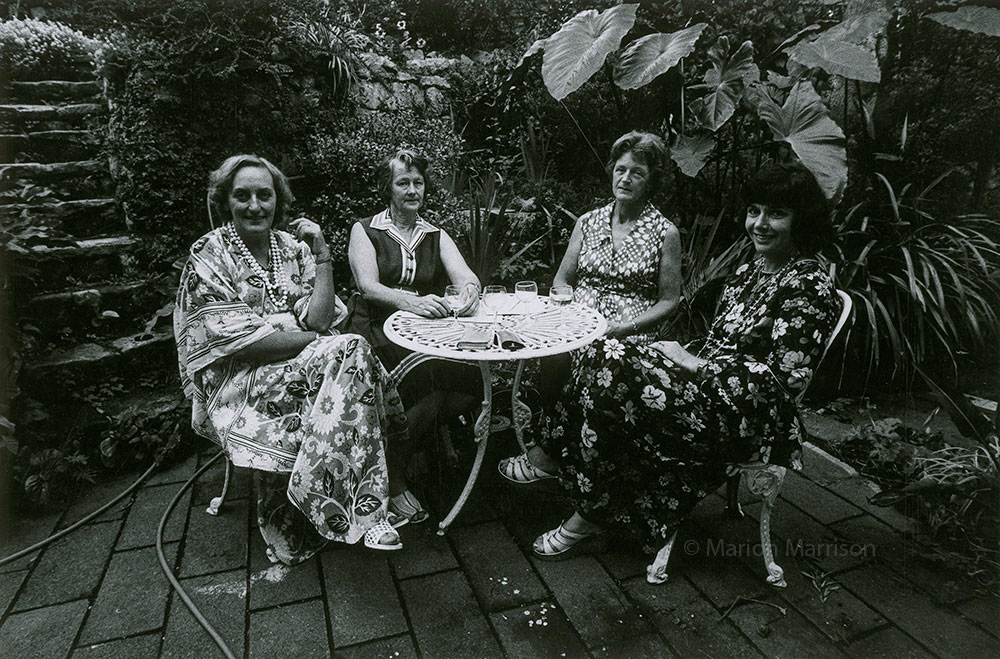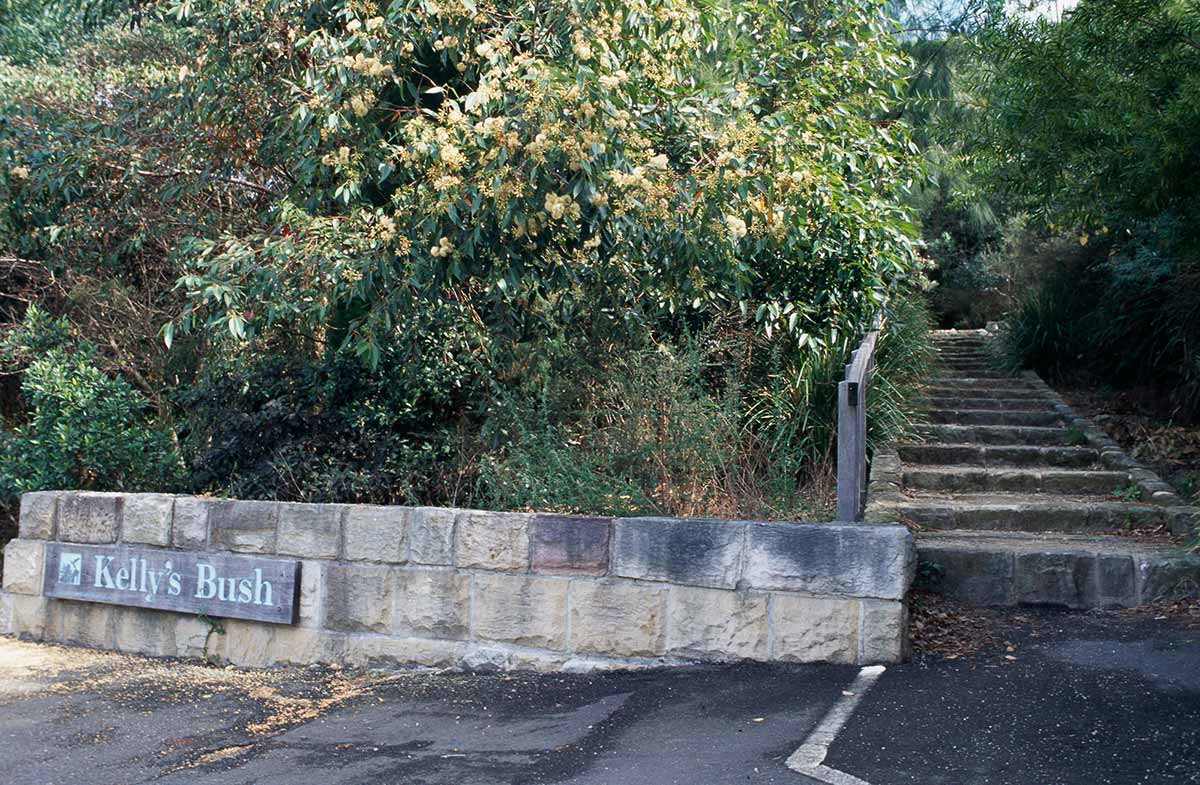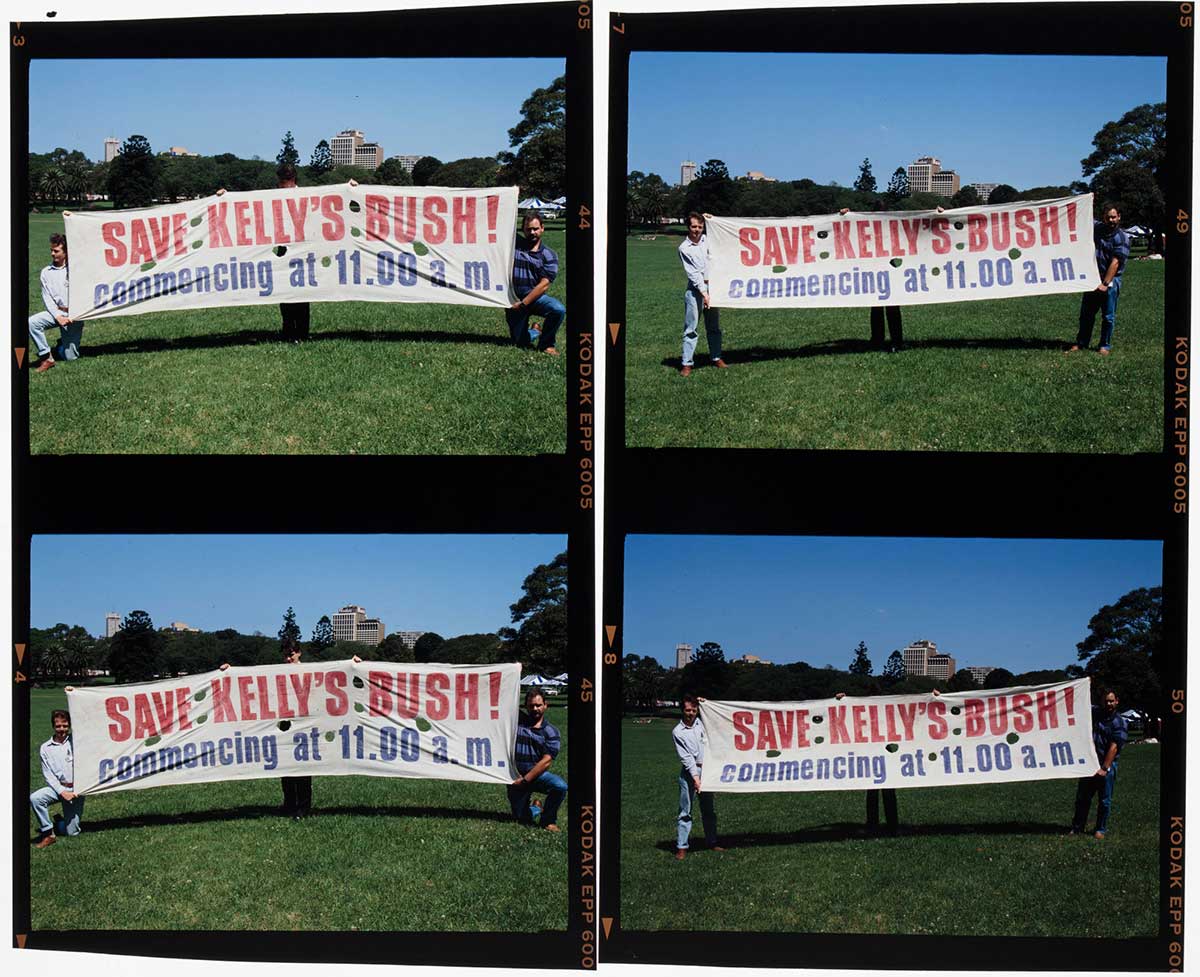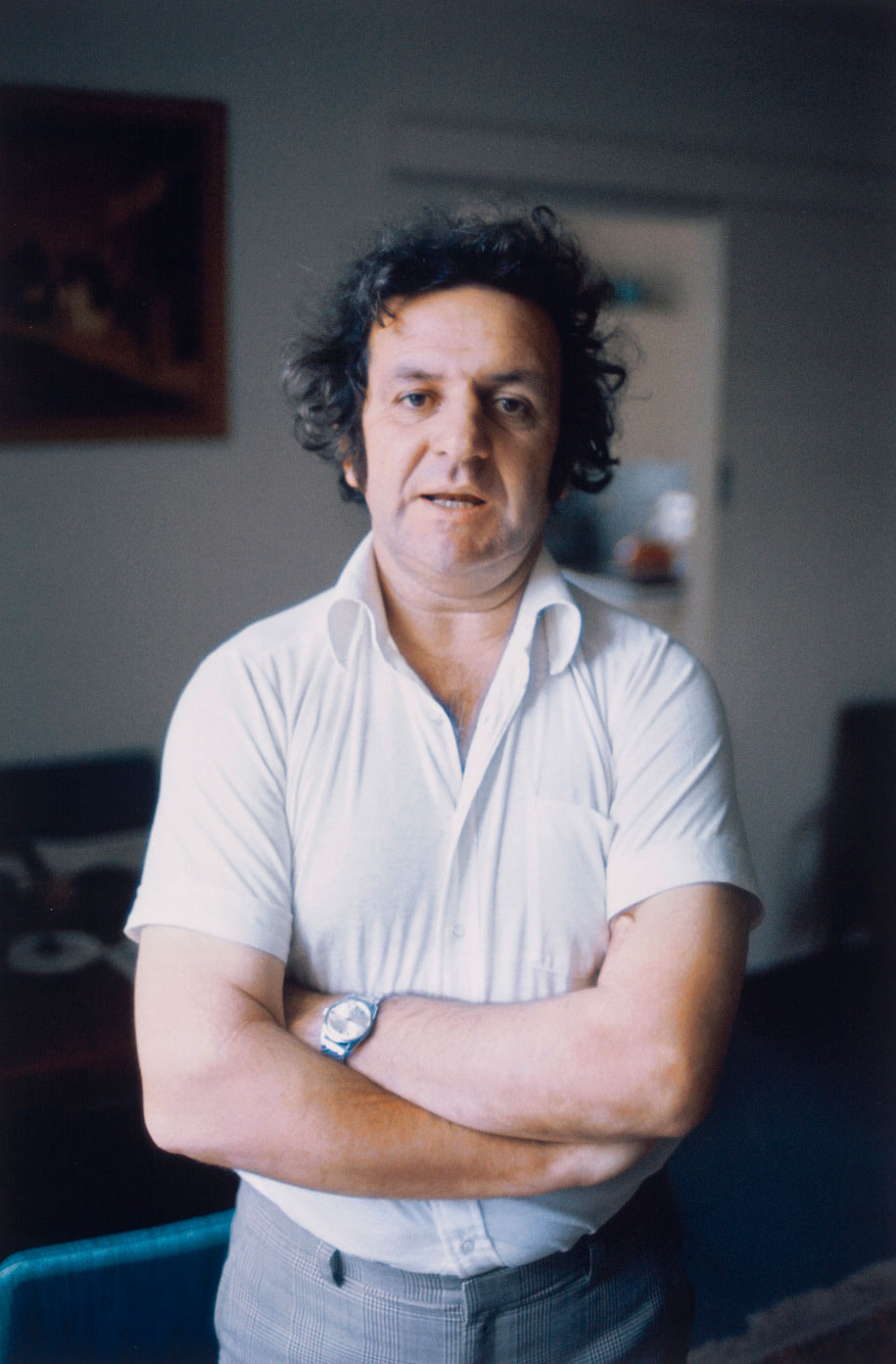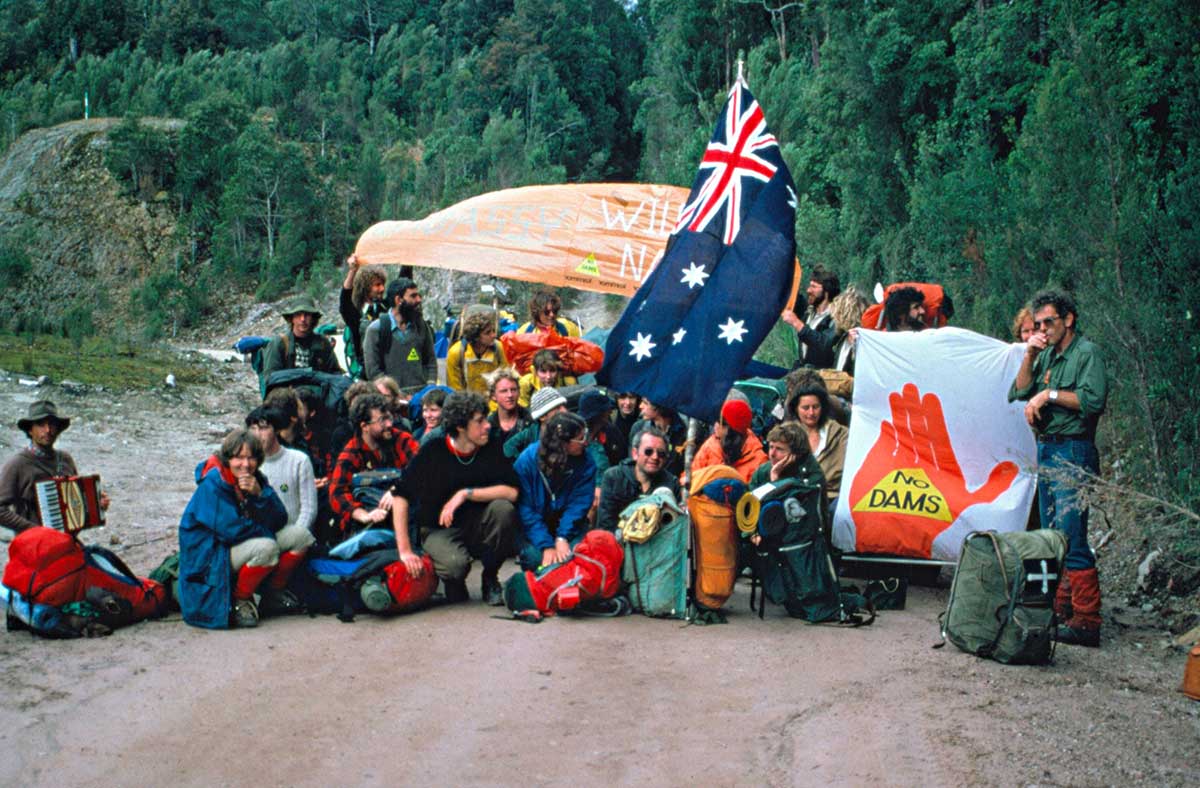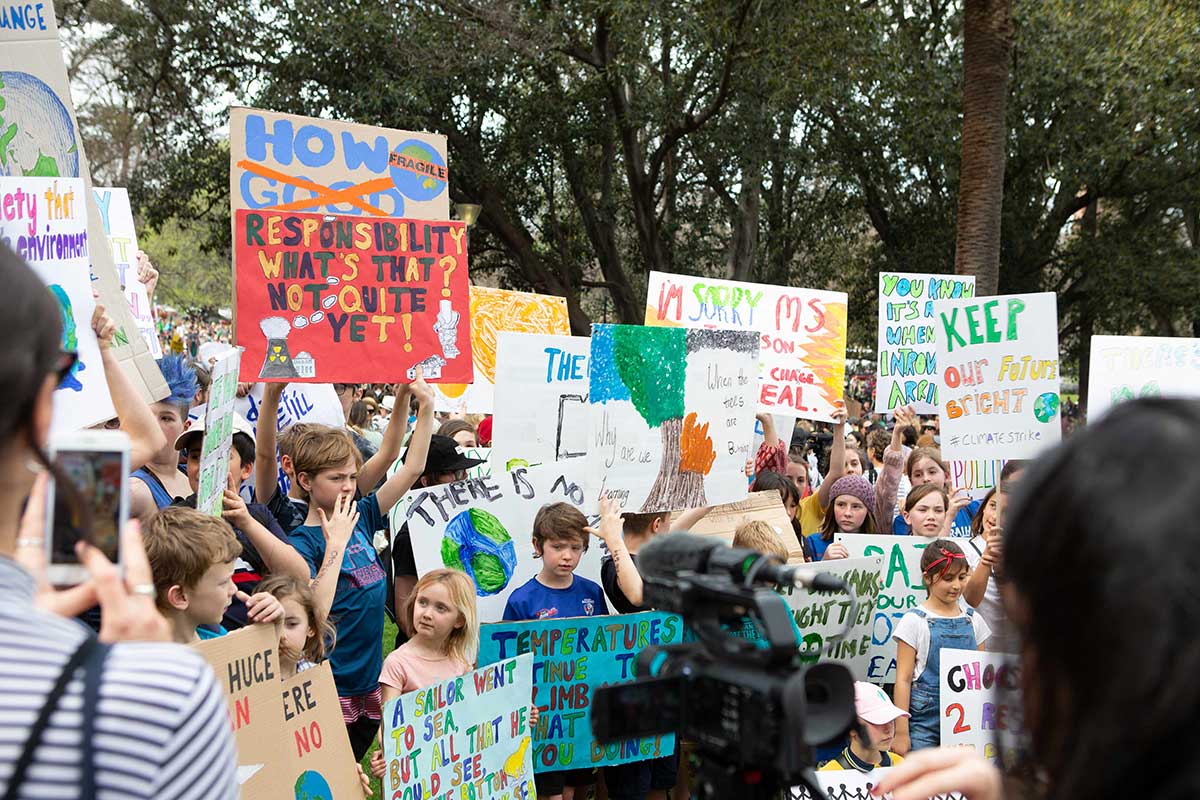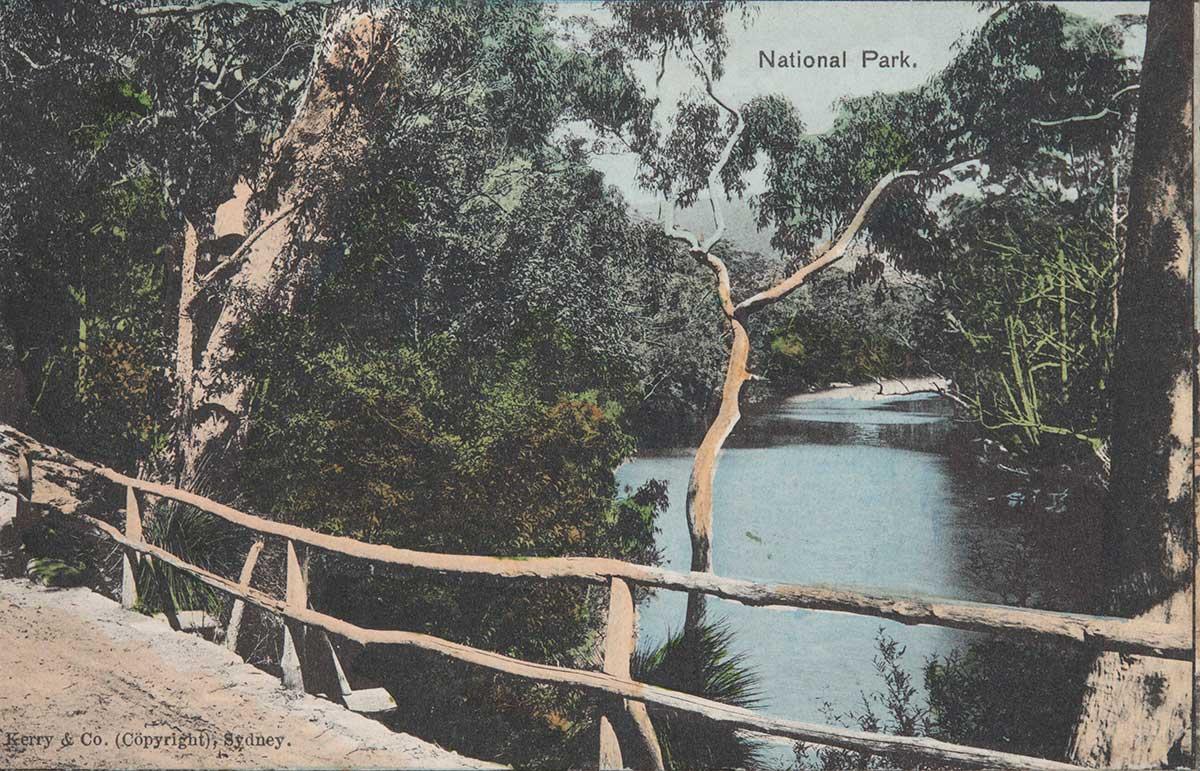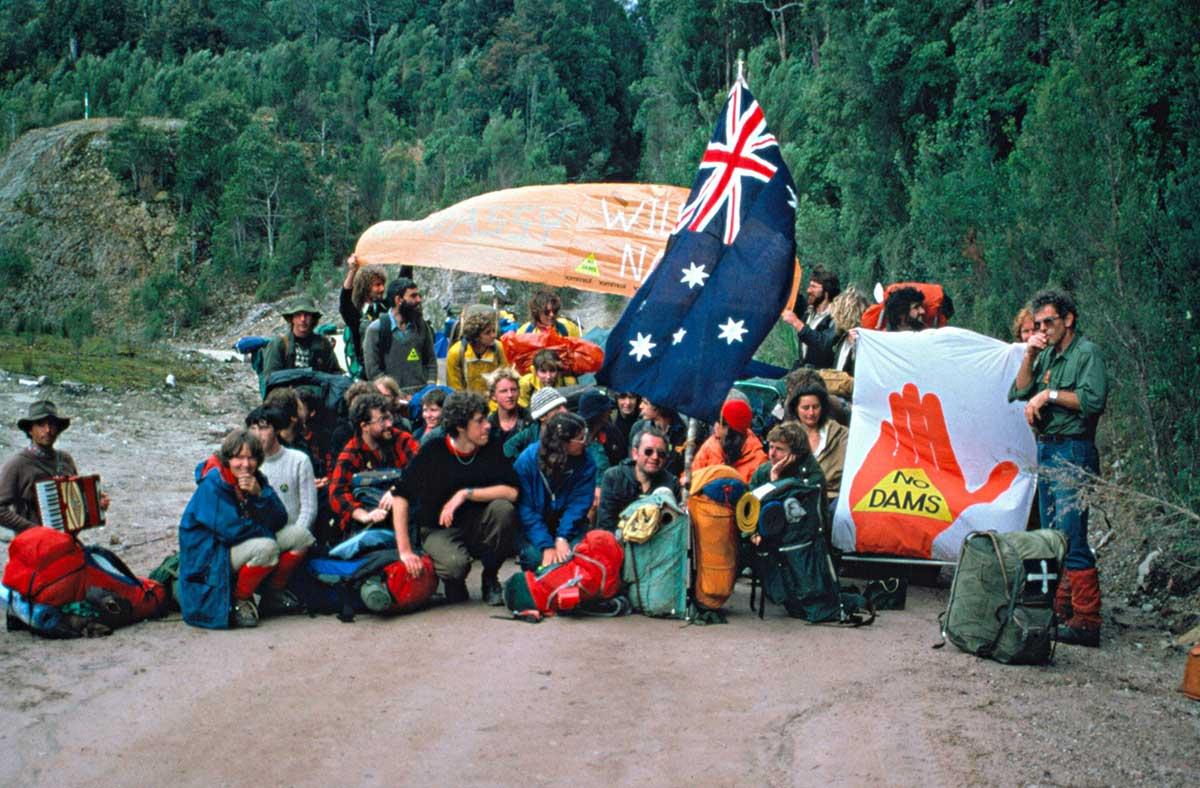Battlers for Kelly’s Bush
1971: First green bans imposed in Sydney
Battlers for Kelly’s Bush
1971: First green bans imposed in Sydney
In a snapshot
The first ‘green ban’ in the world took place in June 1971 at Hunters Hill on Sydney’s Lower North Shore. This ban helped protect Kelly’s Bush, a treasured public area that contained Aboriginal sandstone carvings. It began a movement that saved many important historical and public sites in Australia from development. Green bans continue to be supported by many members of the public, trade unions and organisations such as the National Trust of Australia.
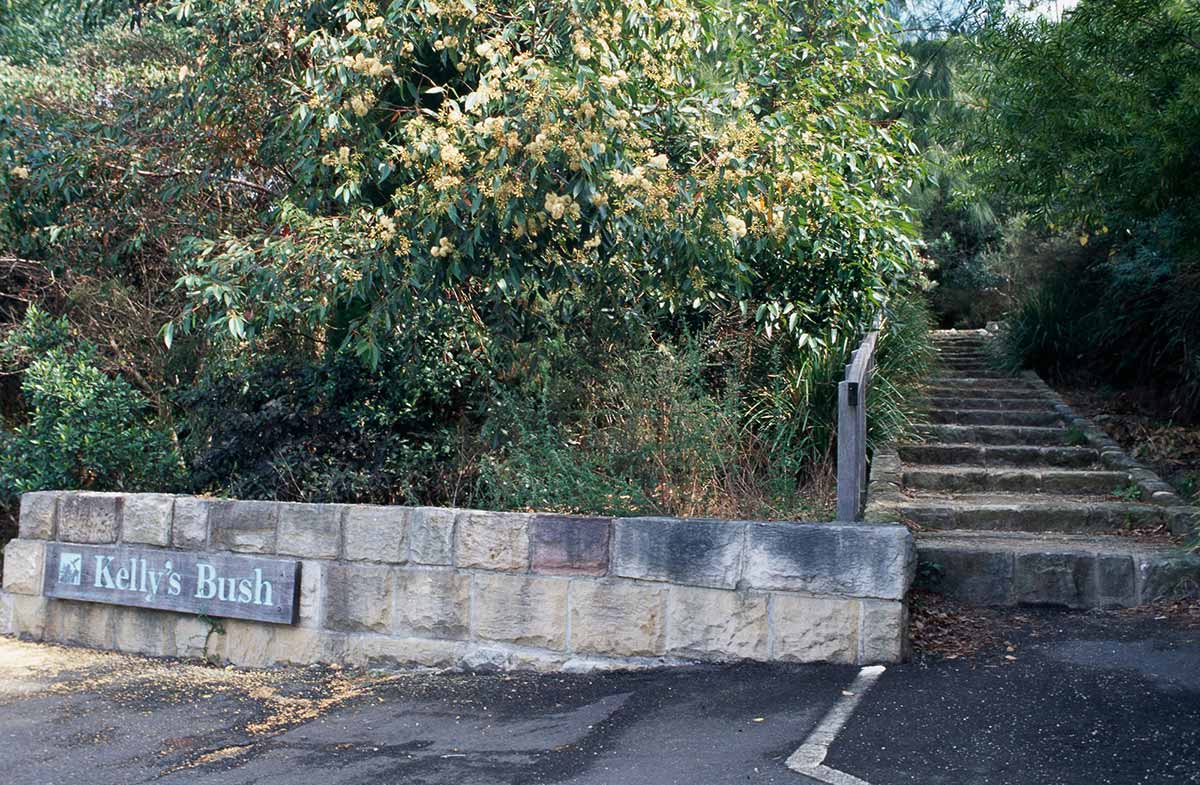
 Can you find out?
Can you find out?
1. How was Sydney changing in the 1960s and 1970s?
2. Who were (i) the Builders Labourers’ Federation, and (ii) the ‘Battlers’?
3. What was the first green ban, and why was it a success?
What led to the first green ban?
The Builders Labourers’ Federation was a trade union created in 1911. By the early 1970s this organisation had around 11,000 members. It covered a number of jobs including dogmen (crane directors), riggers (ship workers), scaffolders (who work on scaffolding for buildings), powder monkeys (explosives workers), hoist drivers (large-vehicle drivers) and steel fixers (who reinforce concrete with steel rods).
Research task
When and where have there been other green bans since the ban at Kelly’s Bush? Do some research to find out.
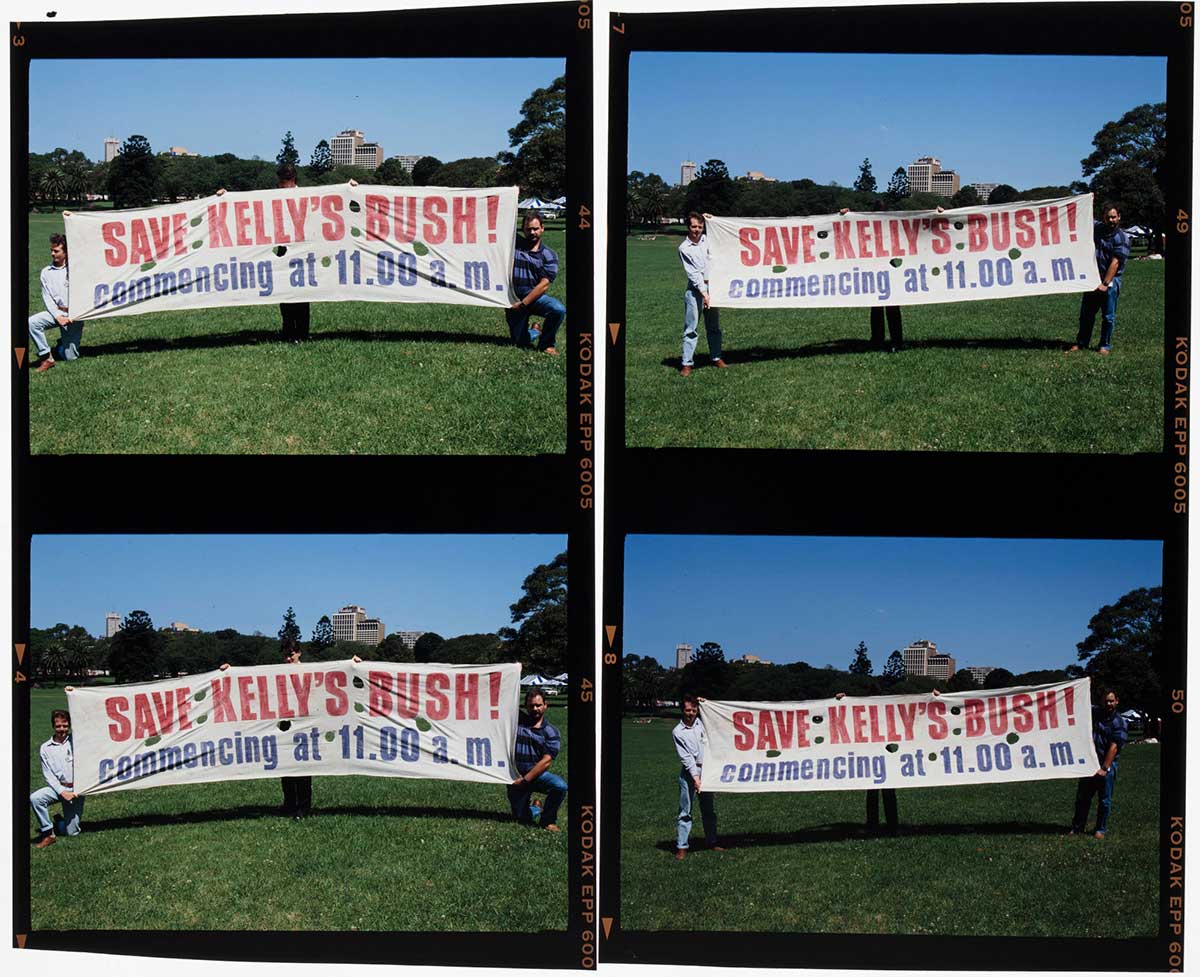
The Builders Labourers’ Federation represented many workers who were helping to transform Sydney from a low-rise city, mostly based around the harbour, into a large city with many skyscrapers. Federation members worried that building office blocks and high-rise apartments might damage the environment, and they preferred to build hospitals and schools.
Jack Mundey, a well-known Builders Labourers’ Federation member, created the phrase ‘green ban’ in 1973. It could refer to workers defending public spaces, protecting existing houses from demolition or preserving old and historic buildings that might not yet be protected by heritage listing
‘Yes, we want to build. However, we prefer to build urgently required hospitals, schools, other public utilities, high-quality flats, units and houses, provided they are designed with adequate concern for the environment, than to build ugly unimaginative architecturally bankrupt blocks of concrete and glass offices.’
Jack Mundey, Sydney Morning Herald, January 1972
Where was the first green ban?
Kelly’s Bush is a site of great natural beauty and Aboriginal sandstone carvings in the Sydney suburb of Hunters Hill. The original people who lived there are the Guringai-speaking Wal Umedegal clan. Thomas Hussey Kelly donated this land for the public to use in 1892. But it was sold to a land-developing company, AV Jennings, in 1966. AV Jennings wanted to put luxury houses on the site. This led to the creation of an all-female residents’ committee to protect the land. The group, led by Betty James, called themselves the Battlers for Kelly’s Bush.
Kelly’s Bush was further threatened by the land changing from having ‘reserved open space’ to ‘residential’ status, meaning that houses could be built on it. The Battlers worked with the Builders Labourers’ Federation to hold a public meeting to protest the change, which was attended by over 600 people. The Builders Labourers’ Federation imposed the first green ban (then called a black ban) on 17 June 1971.
‘If cities are going to be for people, and not just for big business, well then of course you’ve got to have areas where you’ve got sensitive development, where you’ve got nice parklands, where you’ve got the minimum of car noise traffic and car traffic, and I think this is a prototype of what could happen in all our urban areas.’
Jack Mundey, 19 November 1981
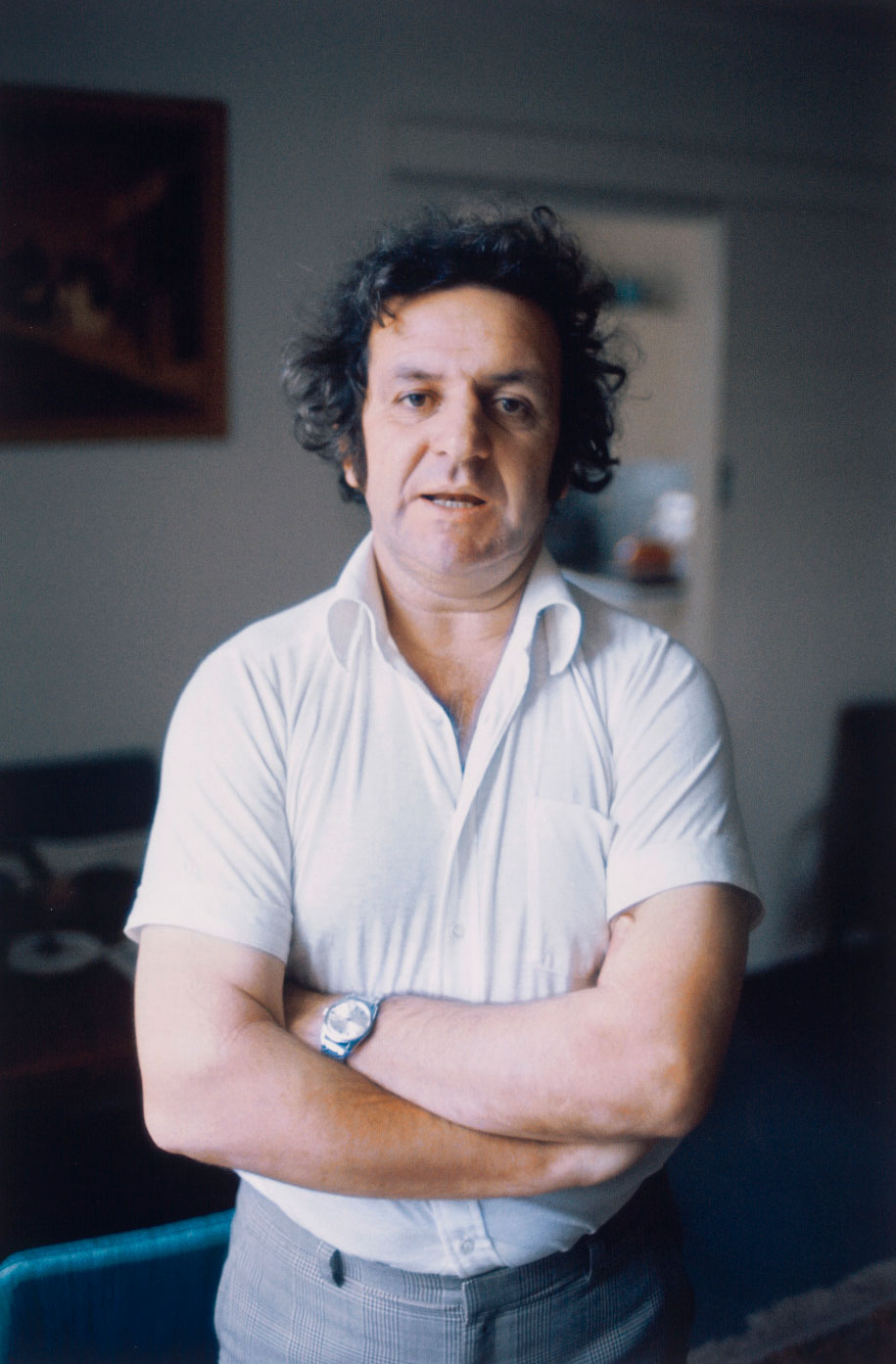
What was the effect of the first green ban?
Because of the green ban AV Jennings was forced to sell the land to the Council of Hunters Hill. In 1977 New South Wales Premier Neville Wran stated that Kelly’s Bush would not be developed, and in 1983 he announced that it would permanently be for public use.
The first green ban led to the protection of many other sites around Sydney, including the Rocks. Green bans also stopped a concrete sports stadium being built in Centennial Park and blocked the building of a carpark under the Botanic Gardens (because this threatened fig trees).
Green bans are still supported by many members of the public, trade unions and organisations such as the National Trust of Australia. Aboriginal and Torres Strait Islander heritage sites are increasingly recognised as needing protection. For example, the Budj Bim Cultural Landscape in Victoria was placed on UNESCO’s World Heritage List in 2019.
Read a longer version of this Defining Moment on the National Museum of Australia’s website.
Research task
The Builders Labourers’ Federation was one of Australia’s largest unions. What happened to this union after the green bans in 1971? Into what organisation did it merge in 2014?
 What did you learn?
What did you learn?
1. How was Sydney changing in the 1960s and 1970s?
2. Who were (i) the Builders Labourers’ Federation, and (ii) the ‘Battlers’?
3. What was the first green ban, and why was it a success?






